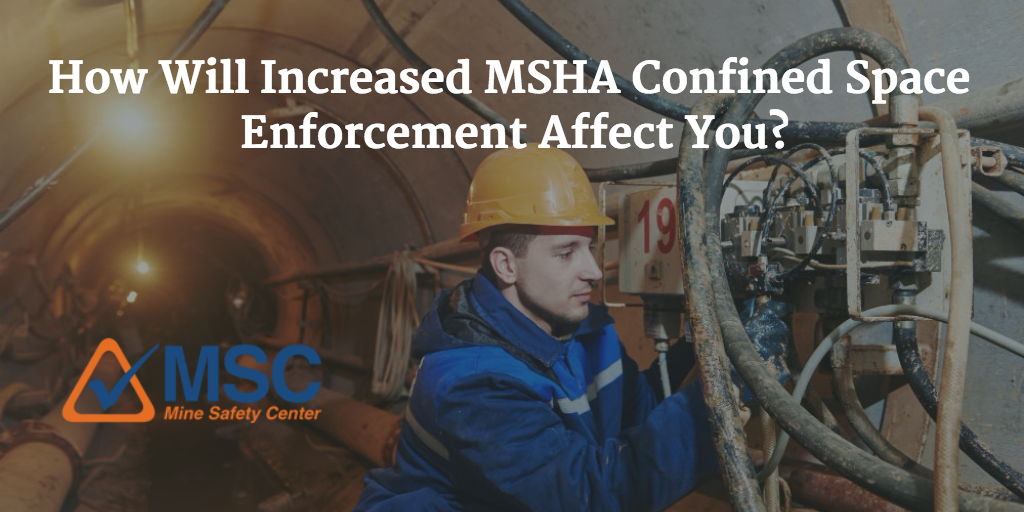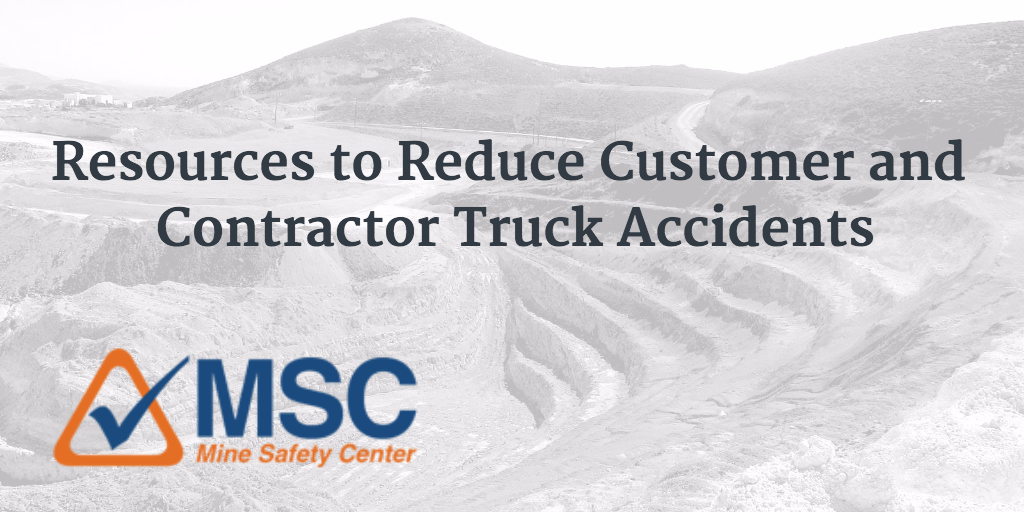MSHA Confined Space Enforcement To Increase Dramatically
I just received an alert on MSHA confined space enforcement that needed to be passed along. Due to recent serious injuries and fatalities MSHA will be “placing special emphasis on enforcing its standards related to entering bins, hoppers, silos, tanks, and surge piles… by focusing additional resources on increased enforcement attention, education and outreach, including walk-and-talks,” said Neal Merrifield.
This MSHA confined space enforcement emphasis is just the latest in a long line of MSHA attempts to increase mine safety through fines and enforcement. The mining community needs to prepare for the imminent increase in MSHA enforcement. To help mines and mine contractors get ready and keep workers safe we’re offering our full Intro to MSHA Confined Space training for free.
The following is the full letter regarding the MSHA Confined Space Entry Alert from MSHA M/NM Administrator Neal Merrifield. All emphasis is added.
Unsafe work in confined spaces has led to miner deaths and injuries in the metal and
nonmetal mining industry. Recent tragic incidents include: a fatality while cleaning the
inside of a tanker railcar and a miner being severely burned during maintenance inside
a baghouse screw conveyor hopper. To address these regrettable occurrences and
help prevent similar instances in the future, MSHA will be placing special emphasis on
enforcing its standards related to entering bins, hoppers, silos, tanks, and surge piles.
MSHA and the Industrial Minerals Association-North America (IMA-NA) have engaged
the issue of confined spaces as a project within the Alliance between the two
organizations. We recommend conducting a hazard assessment and implementing a
permitting system as part of a safe entry standard operating procedure (SOP).
Many mining and milling workplaces contain areas that are considered “confined
spaces” because, while they are not necessarily designed for people, they are large
enough for workers to enter and perform certain jobs. A confined space also has limited
or restricted means for entry or exit and is not designed for continuous occupancy.
Confined spaces include, but are not limited to, tanks, vessels, silos, storage bins,
hoppers, vaults, pits, manholes, tunnels, equipment housings, ductwork, pipelines, etc.
Metal and Nonmetal (MNM) regulations related to confined space that MSHA enforces
include: 30 CFR §§56/57.5001(a); 30 CFR §§56/57.5002; 30 CFR §§56/57.5005(c);
30 CFR §57.5015; 30 CFR §§56/57.14105; 30 CFR §§56/57.15005; and
30 CFR §§56/57.16002.
These standards regulate hazardous atmospheres; material that has the potential to
engulf an entrant; walls that converge inward or floors that slope downward and taper
into a smaller area which could trap or asphyxiate an entrant; and any other recognized
safety or health hazard, such as unguarded machinery, exposed live electrical wires, or
high heat.
Because confined spaces are potentially dangerous, employers should evaluate all
confined spaces in which their employees work to determine whether hazards exist or
whether the work to be done in the space can create hazards. MSHA will place special
emphasis on confined spaces over the next several months by focusing additional
resources on increased enforcement attention, education and outreach, including walk-
and-talks. We are encouraging the mining industry to do the same. MSHA will provide
the mining industry with additional information on the importance of having an effective
MSHA Confined Space Entry program. Please make sure that information gets distributed.
MNM inspectors, joined by Coal inspectors and Educational Field and Small Mines
Services personnel will be visiting mines, calling attention to these potentially hazardous
conditions and discussing safe work practices with miners. Please join MSHA and
IMA-NA in this special safety outreach and help us spread the word to the miners at
your operations. This is the time to be proactive. Assure that an effective Confined
Space Entry program is implemented, that miners are trained on program specifics and
are task trained to recognize and avoid hazards, so they can go home safe and healthy
at the end of each shift.
A link follows to an MSHA Confined Space Entry Alert recently published on MSHA’s website:
http://www.msha.gov/Alerts/confined-space-entry-ha1109.pdf. Also, for more
information on the confined space mining deaths that have occurred since October 2013 and
Please use the photos and descriptions to prompt discussions about fatalities and how to prevent them.
Mining Truck Accidents Can Be Reduced
Have contractors or customers caused mining truck accidents or a near miss on your site? Are aggregate haulers climbing on their trucks at your mine? Do drivers outside their trucks pose a hazard at your mine? Do you have difficulty managing these outside truckers?
Following established rules and procedures is essential to reduce mining truck accidents and other unsafe incidents. These rules and procedures also apply to customers and contractors but are sometimes forgotten because these drivers are not on a mine as often as mine employees.
The Mine Safety Center has teamed up with CalCIMA to produce free materials to teach a few simple ways to stay safe on a mine. “The training materials include signs that will warn drivers of the most common customer truck hazards at mine sites,” said Mike Herges, safety manager at Graniterock and a co-chair of CalCIMA’s Safety & Health Committee. “We hope mine operators embrace these warning signs and they become the standard at all mines,” added Herges. The training materials include a video, postcard, and brochure that incorporate the warning and caution signs. They provide operators a variety of formats to reach drivers, brokers, and fleet managers.
Mine Safety Enforcement To Be “Beefed Up”

In the wake of five metal / non-metal fatalities in the last three weeks, including 3 on August 3rd, the Mine Safety and Health Administration, or MSHA, announced that inspectors will step up enforcement beginning next week.
During a hastily arranged conference call of stakeholders Wednesday, agency administrator Joe Main lamented the fact that, since October, 2014, 38 miners and 14 contractors have lost their lives at their workplaces.
During the call, MNM administrator Neal Merrifield said that 17 coal inspectors are being switched over to work in the MNM segment. Also, Merrifield has authorized the hiring of an additional 21 inspectors. MSHA also indicated that those mines found to not be following mine safety best practices associated with the standards found to have been relevant in the fatalities will be subject to impact inspections. At the call’s conclusion, Main said he realizes that many small mines are involved in the problem. This would indicate a heightened focus on “mom and pop” outfits.
In a letter to the mining community, MSHA’s Joe Main said, “To reverse this unacceptable trend, the Mine Safety and Health Administration is stepping up enforcement efforts and intensifying outreach and education throughout the country.”
Key points:
- MSHA will increase the number of inspectors and inspections at metal/non-metal mines, beginning on 10/1. These will include “walk & talk” meetings with operators and miners.
- Heightened focus on smaller “mom and pop” mines
- MSHA emphasizes the need for thorough workplace exams each shift that are performed by experienced and trained examiners, per the recent program policy letter.
- Inspectors will be closely scrutinizing workplace exam paperwork.
- MSHA re-iterates the importance of safety and health programs, per Joe Main’s May 21 letter to the mining community.



